Subcutaneous fat has, for millennia, been associated with quality, wealth and power and, unfortunately, the misconception the best animal to have (subcutaneous fat is the fat immediately under the skin).
But the good news is the relatively recent discovery of the weak genetic relationship between marbling and subcutaneous fat means the calf no longer needs to be so fat.
Feeding an animal well improves its eating quality – primarily by increasing marbling – but Te Mania Angus director Tom Gubbins says today we can breed animals to have marbling and eating quality and, crucially, lower subcutaneous fat.
He says this maintains and/or improves carcase quality and increases retail beef yield through decreasing waste.
“How often do you hear a beef producer say he feels more relaxed when his cattle are fat, as though they have time up their sleeve with more joules in the store,” he says.
“In some environments this is an OK strategy, sort of.”
But he added that breeders must remember while fat is a great store of energy it is costly to lay down, and the energy going into fat tissues could have been used for other things such as growth or reproduction.”
When an animal is depositing tissue it is much more efficient to deposit lean tissue but when an animal is losing weight it is much more efficient to lose fat,” Tom explains.
“It would be ideal if environmental conditions existed where cows could be managed so tissue mobilisation wasn’t needed,” he says.
He says energy can be much better directed away from fat storage and into production and revenue.
“Biologically it is more efficient to feed an animal the correct ration every hour, which isn’t practical, but the closer you can balance biology with economics the greater the profit,” Tom adds.
“Doing this will also improve net feed intake and improve the animal’s methane intensity by reducing the amount of methane per kilogram of beef produced.
“If you are truly trying to push the system then you should be considering lowering your genetic subcutaneous fat and increasing your marbling. However, take care to benchmark ie that you are not already at a good level of fat,” he says. “If your cattle have appropriate fat levels for your production system and target market, then reducing or increasing fat genetically will reduce efficiency and importantly profitability.”
“To breed fat is taking the easy option, which will in many circumstances be negatively impacting virtually every positive economic driver.”
To a large extent, the main characteristic that seems to influence increased genetic fat is appetite.
Simply put, fatter animals, simply eat more than the lean cows. What really matters, is what those animals do with the extra energy they have consumed.
Tom says while appetite is important for the animals to be able to quickly eat feed surplus never forget the good doer is just pigging herself.
He says part of the issue is the cows are all treated as one, which they have to be.
“We all know if we fatten them up to joining we increase the chance of them getting in calf,” Tom explains. “The research shows muscle tissue plays an equally important role in terms of helping get them into calf: fat, or muscle – body condition, is what matters.”
“If we breed animals to have more fat it makes no difference to cow fertility.
“It does make a small difference to heifer fertility, which is likely to be an indication of maturity. The fatter ones are likely to be early maturing and therefore more likely to be cycling,” he says.
“I have been witness to the lean cows in the empty pen at preg testing – mind you there are the very fat ones as well. (But the fat cows have just kept all the sugar for themselves).
“But a word of caution, Tom says we need to remember what we see – the phenotype – is the result of the cows’ genetics and their feed.
“We can change the phenotype quite quickly by feeding, but that comes at a cost – so getting the right genetics for your production system and market is important.
“Cows with the right genetics will make better use of feed for you than cows with the wrong genetics, and being genetically fat really just means they’ll put more of the energy they consume into fat!
Managing the cow herd is about managing the phenotype, and ensuring that your cows (especially the young ones) are in the right body condition prior to joining is very important.
“The Trans-Tasman cow productivity project, which is underway at the moment, is going to help us understand our cows better.
“But right now, breed average for fat is fine in Angus. And getting genetics that will convert feed into plenty of valuable calves is the most important goal for breeding.
“Then feed those genetics to optimise their production.”
Acknowledgements to Robert Banks and Brad Walmsley, both from the Animal Genetics and Breeding Unit, for assistance.





